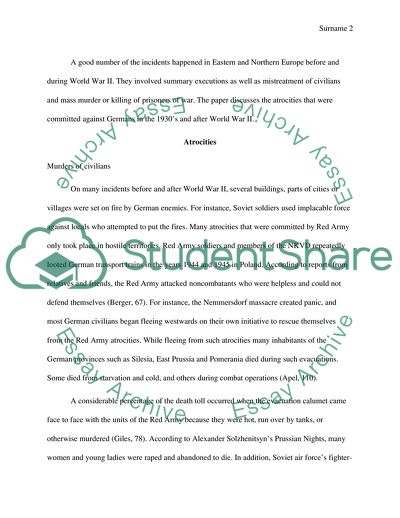Cite this document
(Atrocities Committed Against Germans Report Example | Topics and Well Written Essays - 1500 words, n.d.)
Atrocities Committed Against Germans Report Example | Topics and Well Written Essays - 1500 words. https://studentshare.org/history/1852548-atrocities-committed-against-germans-in-the-1930s-and-after-wwii
Atrocities Committed Against Germans Report Example | Topics and Well Written Essays - 1500 words. https://studentshare.org/history/1852548-atrocities-committed-against-germans-in-the-1930s-and-after-wwii
(Atrocities Committed Against Germans Report Example | Topics and Well Written Essays - 1500 Words)
Atrocities Committed Against Germans Report Example | Topics and Well Written Essays - 1500 Words. https://studentshare.org/history/1852548-atrocities-committed-against-germans-in-the-1930s-and-after-wwii.
Atrocities Committed Against Germans Report Example | Topics and Well Written Essays - 1500 Words. https://studentshare.org/history/1852548-atrocities-committed-against-germans-in-the-1930s-and-after-wwii.
“Atrocities Committed Against Germans Report Example | Topics and Well Written Essays - 1500 Words”. https://studentshare.org/history/1852548-atrocities-committed-against-germans-in-the-1930s-and-after-wwii.


